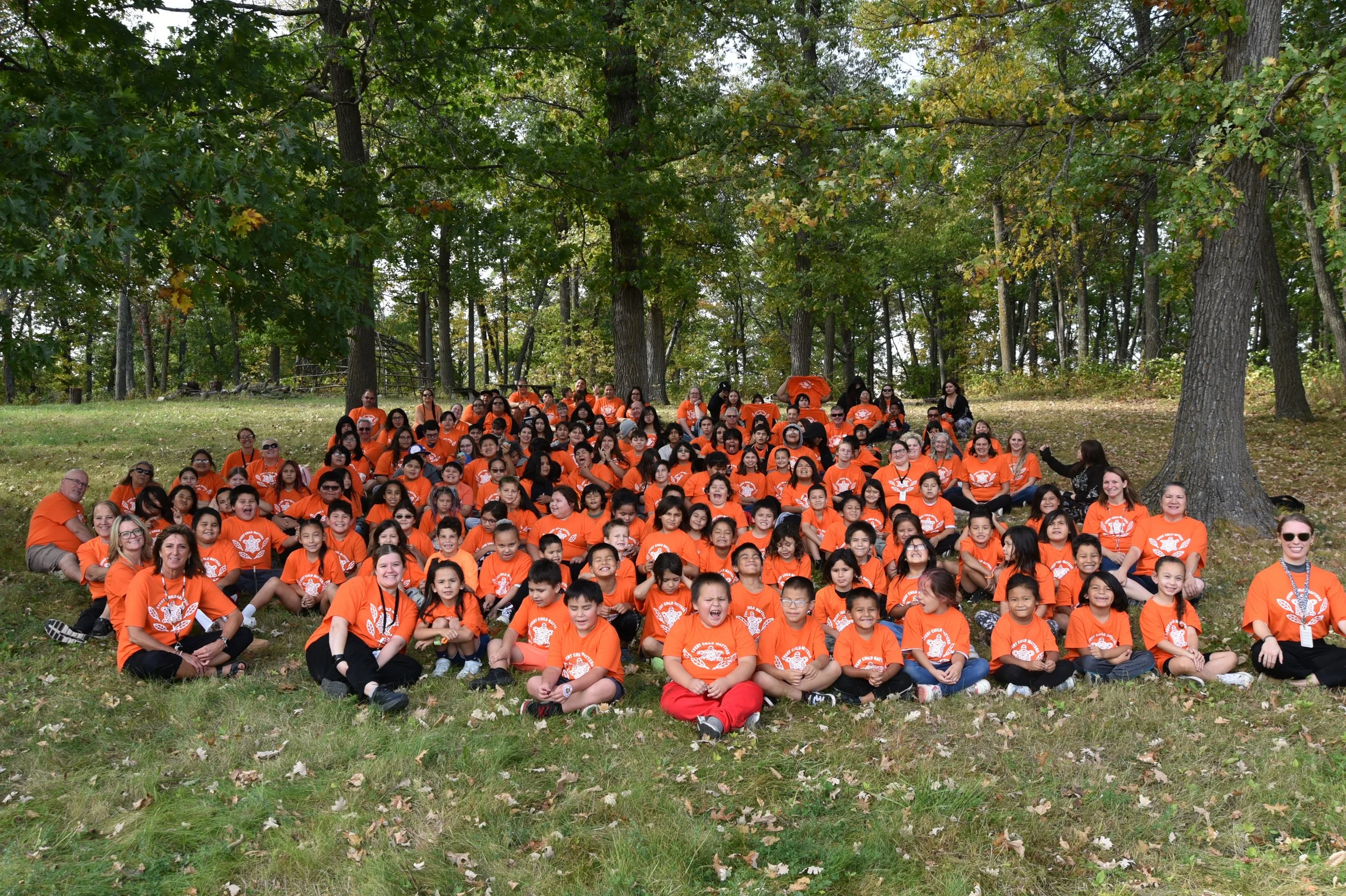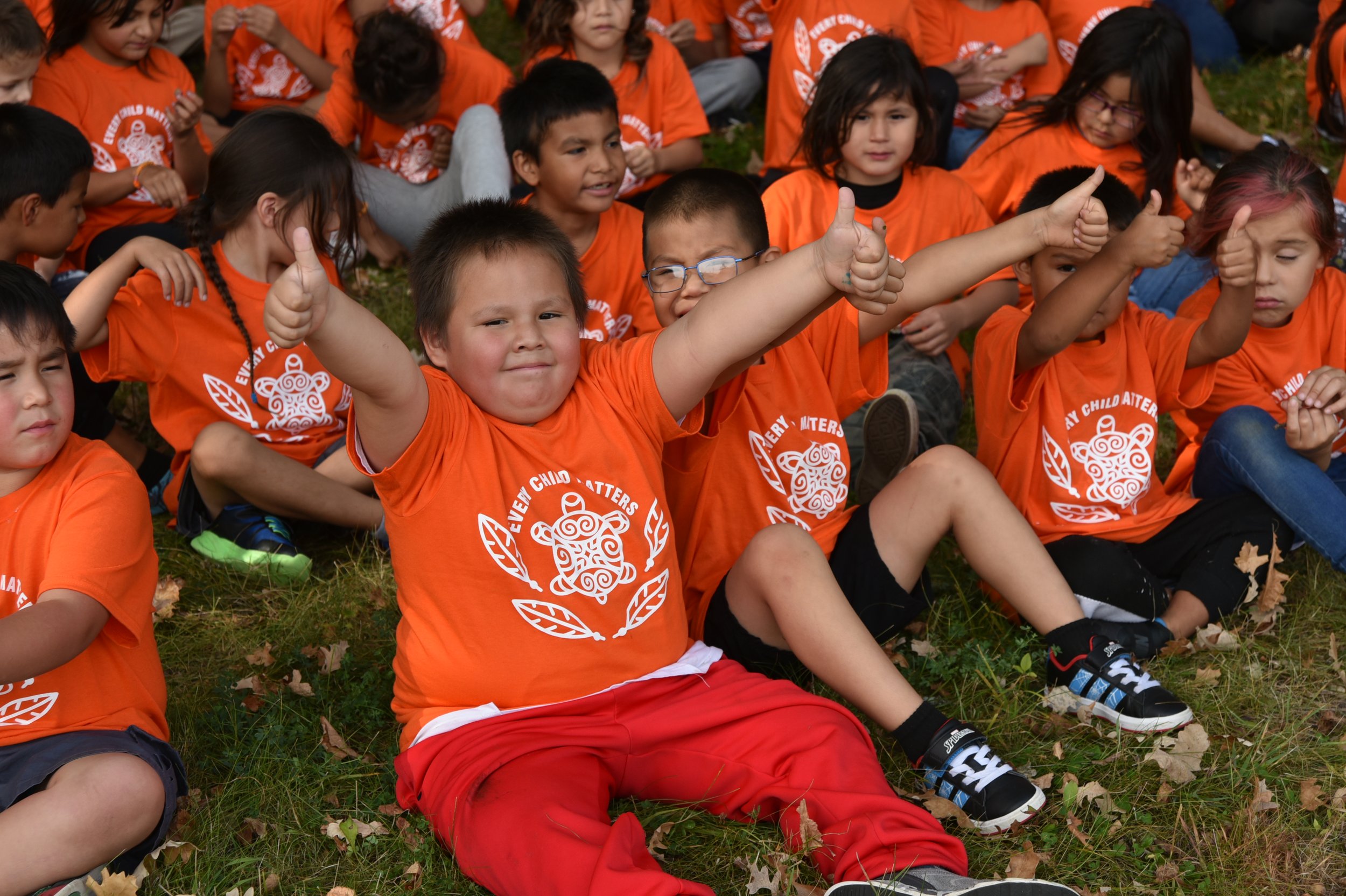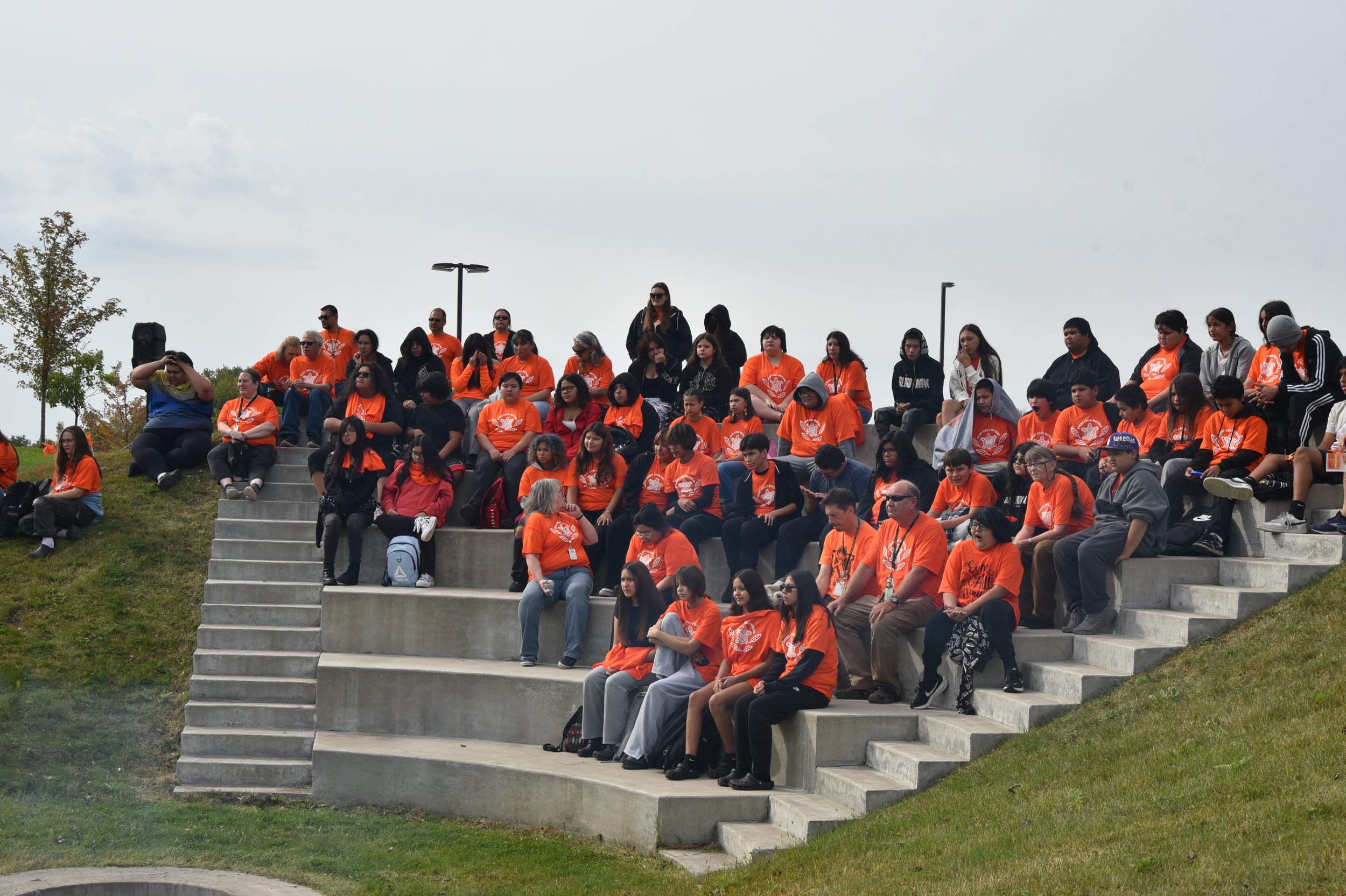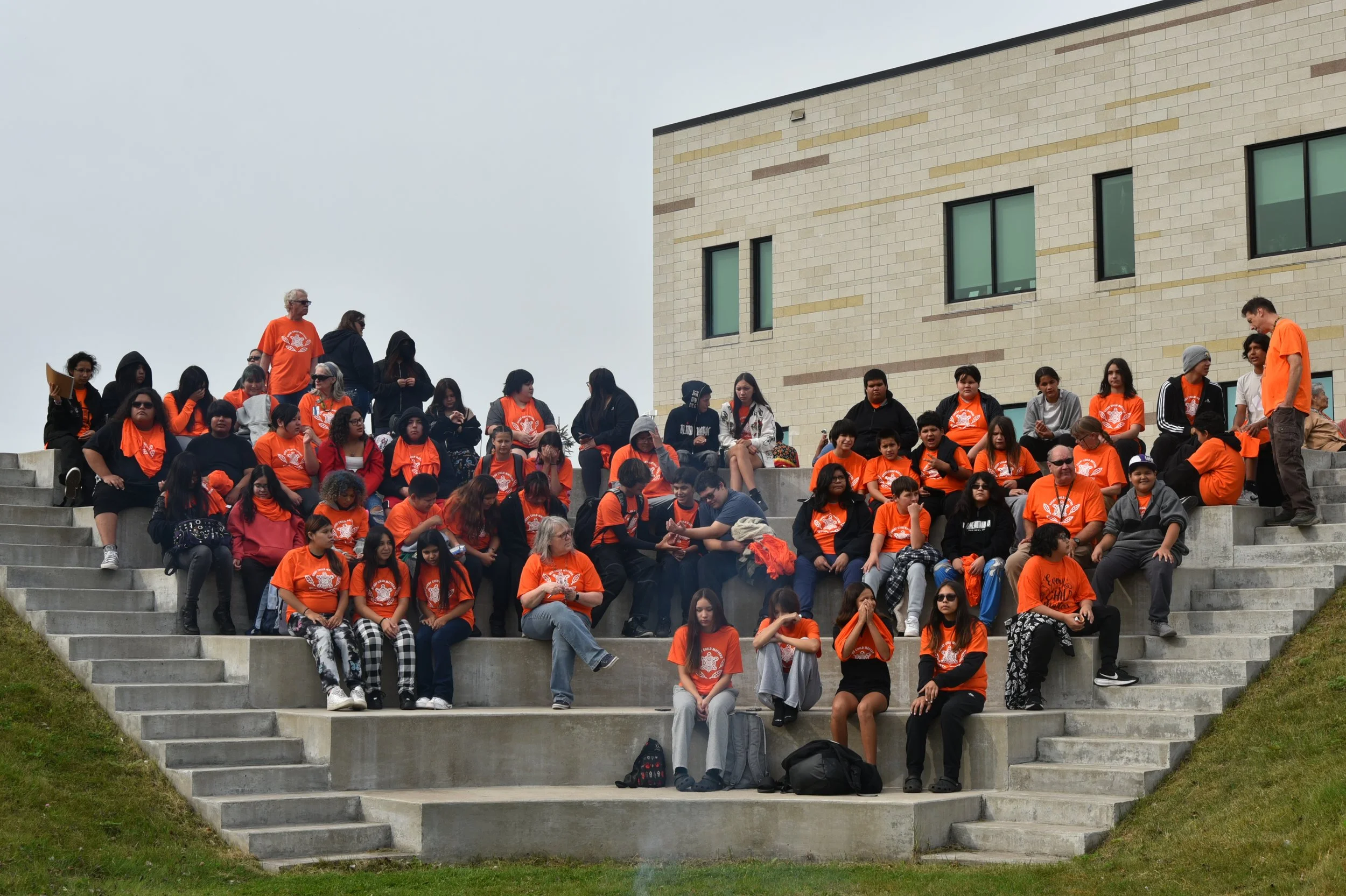EVERY CHILD MATTERS: HONORING VICTIMS AND SURVIVORS OF SYSTEMIC VIOLENCE — NATIONAL DAY FOR TRUTH AND RECONCILIATION
Photos by Vivian LaMoore, Inaajimowin staff
September 30, 2025, was a day set aside to honor victims and survivors of system violence of Indian Boarding Schools on the Every Child Matters - National Day for Truth and Reconcilation. An event held at the fire ring outside of the Miskwangakwedooke Community Center honored children through prayer, song, stories, and community. An orange pinwheel display reminds us that every child matters with messages that contain new facts and reflections, reminding us that Every Child Matters.
Roughly 100 people gathered to honor and reflect on the The event was sponsored by Nay Ah Shing Schools, Mille Lacs *UCare, Mille Lacs Corporate Ventures, and HHS Victim Services. Speakers included Chief Executive Virgil Wind, Bobby Eagle, and Addison Grap-Gahbow. The keynote speaker was Susan Beaulieu.
The residential school system was created as a civilizing mission to isolate Indigenous children from the influence of their own culture and religion in order to assimilate them into the dominant European culture. Orange Shirt Day was first established as a day of observance in 2013. The use of an orange shirt as a symbol was inspired by the accounts of Phyllis Jack Webstad, whose personal clothing —including a new orange shirt — was taken from her during her first day of residential schooling, and never returned. This was common practice in all Christian schools throughout the times residential schools were in operation with most schools being shut down in the 1970s.
Onamia High School junior Addison Grap-Gahbow recited at the HHS event a piece she wrote to honor those victims and survivors of the era. Her speech is published here in it's entirety:
Ladies and gentlemen,
Thank you for allowing me to speak with you today about a dark chapter in history—one that, for far too long, has been silenced, ignored, or forgotten. It's a story of pain, loss, and resilience. A story of children whose lives were shattered by a system built on oppression, and a legacy that continues to affect generations of Indigenous people across this country.
In the late 19th and early 20th centuries, the U.S. government, in partnership with religious institutions, took Native American children from their homes and communities and placed them in boarding schools-schools with the stated mission of "civilizing" them. The goal was clear: to erase their culture, to strip them of their language, to make them "white." These children were told that their very identity was wrong . Their traditional ways of life, their languages, their spiritual beliefs— everything they held dear-was deemed inferior, savage, something that needed to be wiped out.
But what happened in these institutions was far more than just cultural erasure. What happened was unspeakable.
Thousands of children were subjected to physical, emotional, and sexual abuse. They were starved, beaten, and punished for speaking their native languages. Many were subjected to cruel medical experiments. Others never made it out alive. The trauma inflicted on them in these schools echoes through the generations — crippling families, communities, and entire cultures.
Imagine a child - barely old enough to understand the world - taken from their parents and sent to a place where love and warmth were replaced with fear and cruelty. These children were often forced to wear uniforms, cut their hair, and abandon their names. They were denied even the simplest of comforts, such as the ability to call their parents or speak to them in their mother tongue. They were treated as though their very existence was a mistake.
The pain they endured was not just physical; it was spiritual, cultural, and emotional. The violence they experienced was not just about the beatings — it was about trying to break them in every way possible. The psychological scars of this forced assimilation left many of these children feeling disconnected from their own identity, their families, and their communities.
And what's even more heartbreaking is that so many of these children were never able to heal. Many didn't survive. The system sought not just to forcefully assimilate them, but to destroy them, to erase them from existence, leaving behind nothing but broken spirits and shattered lives.
These schools were meant to steal the very essence of who these children were. And, in many ways, they succeeded. But let us not forget that the resilience of Indigenous peoples, even in the face of such profound trauma, has always been stronger than the forces that sought to destroy them. Many of these children grew up to become the leaders, the warriors, and the survivors who continue to fight for their communities today.
We cannot change the past, but we must confront it. The abuse that took place in Native American boarding schools is not just a historical tragedy; it is a continuing injustice. The emotional scars left on survivors are real, and they ripple through generations. The loss of culture, the loss of language, the loss of family - those wounds have not healed, and they won't until we acknowledge the full extent of what happened.
Today, we stand with the survivors — those who were taken from their homes and families, those who endured untold suffering, and those who never made it home. We stand with their families and communities. We stand with those who are still waiting for justice.
As we reflect on this history, we must ask ourselves: How do we begin to heal? How do we make amends for the damage done? The path forward is difficult, but it begins with truth. With listening. With understanding. With the courage to say that what happened was wrong, and that it must never happen again.
In remembering, we honor the lives lost, the lives broken, and the lives that continue to fight. In acknowledging the pain, we begin the long process of healing — for them, for their children, and for all of us.







